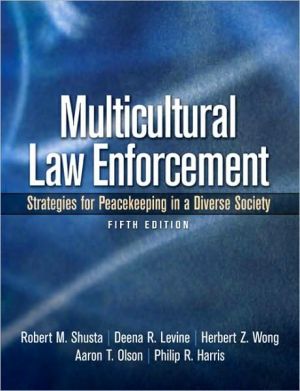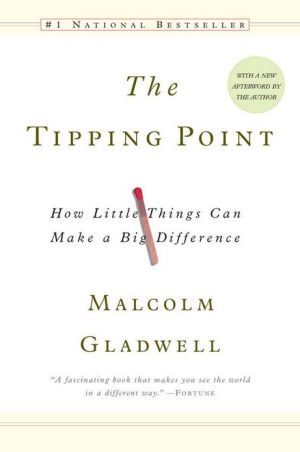Multicultural Law Enforcement: Strategies for Peacekeeping in a Diverse Society
MULTICULTURAL LAW ENFORCEMENT: STRATEGIES FOR PEACEKEEPING IN A DIVERSE SOCIETY, 5/e explains how the influences of culture, race, and ethnicity impact law enforcement and the communities they serve. Known for its breadth of coverage, this classic text addresses a variety of populations and includes new material on the mentally ill, the homeless, gangs, immigrants, Native Americans, multiracial groups, and cross-cultural communications styles. Using cases, guidelines, and protocols, it...
Search in google:
MULTICULTURAL LAW ENFORCEMENT: STRATEGIES FOR PEACEKEEPING IN A DIVERSE SOCIETY, 5/e explains how the influences of culture, race, and ethnicity impact law enforcement and the communities they serve. Known for its breadth of coverage, this classic text addresses a variety of populations and includes new material on the mentally ill, the homeless, gangs, immigrants, Native Americans, multiracial groups, and cross-cultural communications styles. Using cases, guidelines, and protocols, it focuses on the contact police officers and civilian employees have with the community and stresses the importance of cultural awareness, understanding and respect.
Preface \ This second edition of Multicultural Law Enforcement: Strategies for Peacekeeping in a Diverse Society is a tribute to all our readers who enthusiastically received the original work. It is a textbook for police departments and academies, colleges, and universities. It is also designed to assist all levels of criminal justice representatives in understanding the pervasive influences of culture, race, and ethnicity in the workplace and in multicultural communities. The text again focuses on the cross-cultural contact that police officers and civilian employees have with citizens, victims, suspects, and coworkers from diverse backgrounds. This second edition also includes new or expanded material on the following: hate crimes; community-based policing; undocumented immigrants and immigrant women; urban dynamics; women, gays, and lesbians in law enforcement; and a substantial discussion of racial profiling. We include updated demographic data using the most current population estimates and projections available to date.\ Throughout these pages, we stress the need for awareness, understanding of cultural differences, and respect toward those of different backgrounds. We encourage all representatives of law enforcement to examine preconceived notions they might hold of particular groups. We outline for police executives why they should build awareness and promote cultural understanding and tolerance within their agencies.\ An increasing number of leaders in law enforcement agencies and their employees have accepted the premise that greater cross-cultural competency must be a key objective of all management and professional development. Demographicchanges have had a tremendous impact not only on the types of crimes committed but also on the composition of the law enforcement workforce and the people with whom officers make contact. To be effective, police executives must understand the diversity in their workforces and in their changing communities. Professionalism today includes the need for greater consideration across cultures and improved communication with members of diverse groups.\ In an era when news is processed and accessed immediately, the public is exposed almost daily to instances of cross-cultural and interracial contact between law enforcement agents and citizens. So, too, have community members become increasingly sophisticated and critical with regard to how members of diverse cultural and racial groups are treated by public servants. Employees of police departments and other agencies entrusted with law enforcement find that they are now serving communities that carefully observe them and hold them accountable for their actions.\ This new edition has been updated and expanded to provide practical information and guidelines for law enforcement managers, supervisors, officers, and instructors. With cross-cultural knowledge, sensitivity, and tolerance, those who are charged with the responsibility of peacekeeping will improve their image while demonstrating greater professionalism, within the changing multicultural workforce and community.\ Robert M. Shasta, M.P.A.\ Deena R. Levine, M.A.\ Philip R. Harris, Ph.D.\ Herbert Z. Wong, Ph.D.
PrefaceAcknowledgmentsForewordPt. 1Impact of Cultural Diversity on Law Enforcement11Multicultural Communities: Challenges for Law Enforcement32The Changing Law Enforcement Agency: A Microcosm of Society323Multicultural Representation in Law Enforcement: Recruitment, Retention, and Promotions63Pt. 2Training in Cultural Understanding for Law Enforcement894Preparation and Implementation of Cultural Awareness Training905Cross-Cultural Communication for Law Enforcement114Pt. 3Cultural Specifics for Law Enforcement1396Law Enforcement Contact with Asian/Pacific Americans1407Law Enforcement Contact with African Americans1668Law Enforcement Contact with Latino/Hispanic Americans1939Law Enforcement Contact with Arab Americans and Other Middle Eastern Groups21410Law Enforcement Contact with American Indians242Pt. 4Response Strategies to Crimes Motivated by Hate/Bias26511Hate/Bias Crimes: Insights and Response Strategies26712Hate/Bias Crimes: Reporting and Tracking29413Hate/Bias Crimes: Investigations, Control, and Victimology315Pt. 5Cultural Effectiveness for Peace Officers34514Peace Officer Image and Cultural Sensitivity34615Police Officer Professionalism and Peacekeeping Strategies in a Diverse Society367Appendix A Multicultural Community and Workforce: Attitude Assessment Survey395Appendix B Cultural Diversity: Survey for Needs Assessment401Appendix C Recruitment Action Plan407Appendix D Techniques and Methods of Recruitment: Expanded Course Outline410Appendix E Sample Agency Courses412Appendix F Guidelines for Design of Cultural Awareness Programs422Appendix G Cultural Holidays and Religious Celebrations434Appendix H Models for Management438Appendix I Directory of Organizations: Antibias Education440Appendix J Hate Violence Tracking Forms442Appendix K Listing of Consultants and Resources446Index449








